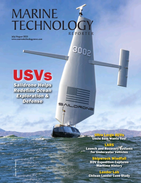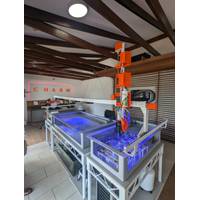
Lending Oceans a Robotic Hand
the seabed, picking individual nodules with robotic arms. There is no sediment release mid-water and no noise from pumps or the DP system of vessels.It is an example of how hopeful industry players are that they can counter environmental concerns. Over 20 countries and companies such as Google, BMW, Volvo and Samsung have indicated their opposition to seabed mining. They prefer to protect the unique and largely unknown ecology of the seafloor.Will the human and robotic helping hands being developed be enough to protect the beauty and mystery of the deep for future generations? Time will tell

MATS Spotlights UK's Future Marine Infrastructure for Its 10th Edition
future investment in the UK’s Marine Research Infrastructure.They will be joined by Conrad Humphreys, who will bring his unique inspirational insight as British yachtsman, business owner, adventurer and explorer, including being the youngest entrant in the Whitbread Round the World Yacht Race (now Volvo Ocean Race) and sailing solo in the Vendée Globe.Alongside the keynotes, MATS technical sessions will tackle critical themes on marine autonomy including the blue economy, robotics and remote data, artificial intelligence and next generation autonomous platforms while visitors will have the
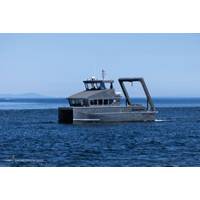
US National Lab Takes Delivery of First Hybrid Research Vessel
multiple research workstations and convertible sleeping arrangements for multiday assignments. Sustainability and operational flexibility have been enhanced via the vessel’s advanced parallel hybrid electric propulsion system.While RV Resilience can travel at speeds of up to 23 knots on its two Volvo Penta D8-510 main diesel engines, it can quickly transition to a silent, all-electric mode capable of speeds of up to 7 knots. The vessel is equipped with 113 kWh of Spear Trident batteries, Danfoss electric motors and Twin Dosc gearboxes. This silent, all-electric mode will allow the PNNL researchers
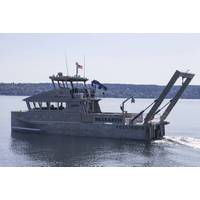
Snow & Company Delivers Hybrid Research Vessel Resilience to PNNL
Resilience for the Pacific Northwest National Laboratory.The first and only hybrid vessel in the Department of Energy's (DOE) fleet, the 50-foot aluminum catamaran was designed by Incat Crowther with propulsion integration provided by Pacific Power. Hybrid propulsion is accomplished by joining twin Volvo Penta marine engines, and two Danfoss motor-generators. Power is stored using a Spear Trident battery system.The power and propulsion setup allows the vessel to operate in a zero-emission "quiet" state at lower speeds, enabling a more effective approach for marine research. This innovative
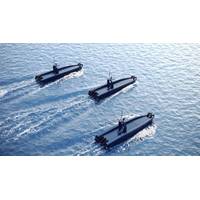
Metal Shark Debuts Prowler Autonomous Vessel and Frenzy Micro-USV
or at sea. Rear wheels are equipped with OTR-certified tires and marine brakes, and Prowler features DOT-compliant lighting. This allows Prowler to be transported over the road behind a conventional prime mover with no trailer, greatly simplifying logistics for operators.Propelled by a 300-horsepower Volvo Penta D6 Aquamatic inboard diesel engine and stern drive, the 30-foot, welded-aluminum Prowler operates as a typical surface vessel while underway, with a deep-vee planing hull delivering a 35-knot sprint speed and 500 nautical mile range.Designed for extended loitering in a semi-submerged state
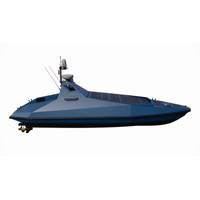
Robosys to Supply AI-driven Autonomous Control System for Legacy Marine USV
Elizabeth (Gqeberha), South Africa.The 9.5m USV can be launched from ashore or from floating platforms such as logistic support ships, frigates and other mothercraft, to perform patrol, surveillance, interdiction, search and rescue functions, amongst others.The USV features an aluminum hull, powered by a Volvo Penta D-6-400 engine, with steering and onboard systems, monitoring and controls, which includes payload and surveillance sensors. The USV is a versatile and multi-function platform that allows for the installation of most industry-standard sensors and effectors.The USV’s control system for
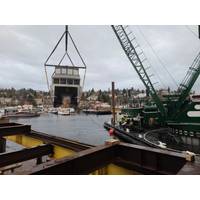
PNNL's New Research Vessel Launched
PNNL-Sequim marine research facility in 2024.The Incat Crowther designed vessel, equipped with both standard diesel engines and electric motors, will be the first hybrid vessel in the DOE fleet. The vessel will be powered by an advanced parallel hybrid-electric propulsion system, consisting of two Volvo Penta D8-510 main engines, capable of producing 374 kW each, supplemented by two Danfoss Editron EM-PMI375-T200-2600 motor-generators. Power is stored using a Spear Trident battery system, allowing the vessel to operate quietly in a zero-emission electric state while engaged in a mixture of survey
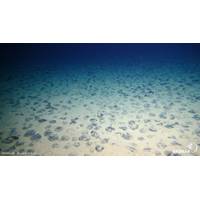
Deep-Sea Mining Threatens Biodiversity 25 Times More Than Land-Based Mining, Report Says
price per square kilometer to mine them, according to the report.Seabed mining in international waters cannot start until the International Seabed Authority (ISA), a Jamaica-based U.N. body, decides on regulations expected by July.Several countries, including Germany, and companies, such as Google, AB Volvo Group, and Samsung SDI are calling for a moratorium on the start of the practice.Others are supporting it. Norway in June proposed opening parts of its extended continental shelf in the North Atlantic for mineral exploration."Any deep sea activity is hugely expensive. In Norway, we're also
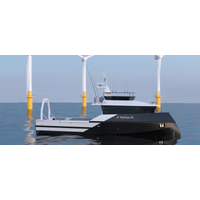
New Autonomous Hydrographic Survey Vessel Design Unveiled
autonomous hydrographic survey vessel design developed in collaboration with Mythos AI, Echo81, and World Marine Design.SAFE Boats has exclusive rights to build the design at its Tacoma, Wash. large-craft production facility. Merlin will be a Jones Act-compliant all-aluminum hull powered by a twin Volvo Penta D13 Hybrid-ready System with IPS. For a zero-emission power package, the Merlin can accommodate forward-thinking hydrogen technology supplied by Zero Emission Industries (ZEI). Both power options offer lower emissions and extended range to perform site assessment surveys at offshore wind energy
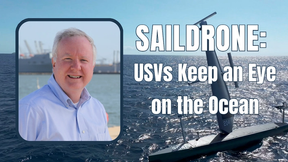
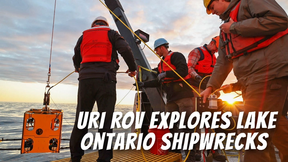
 February 2025
February 2025


